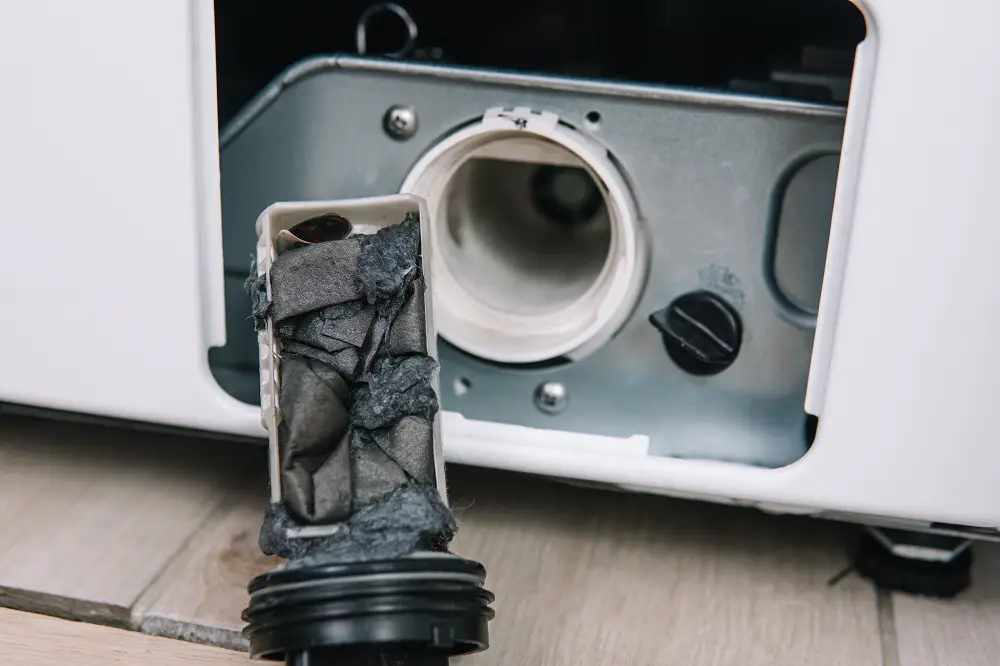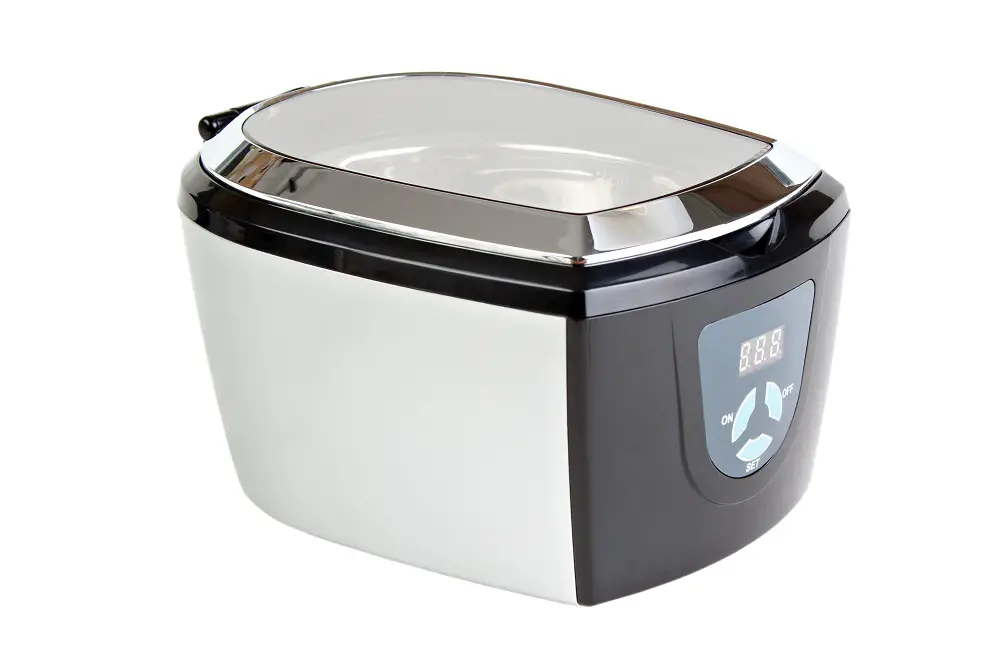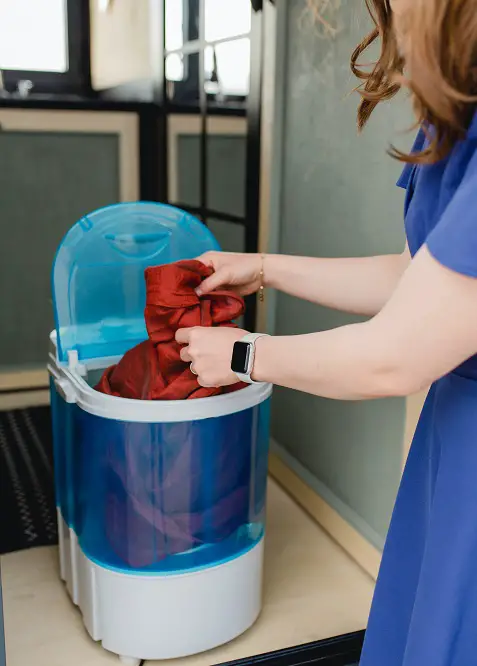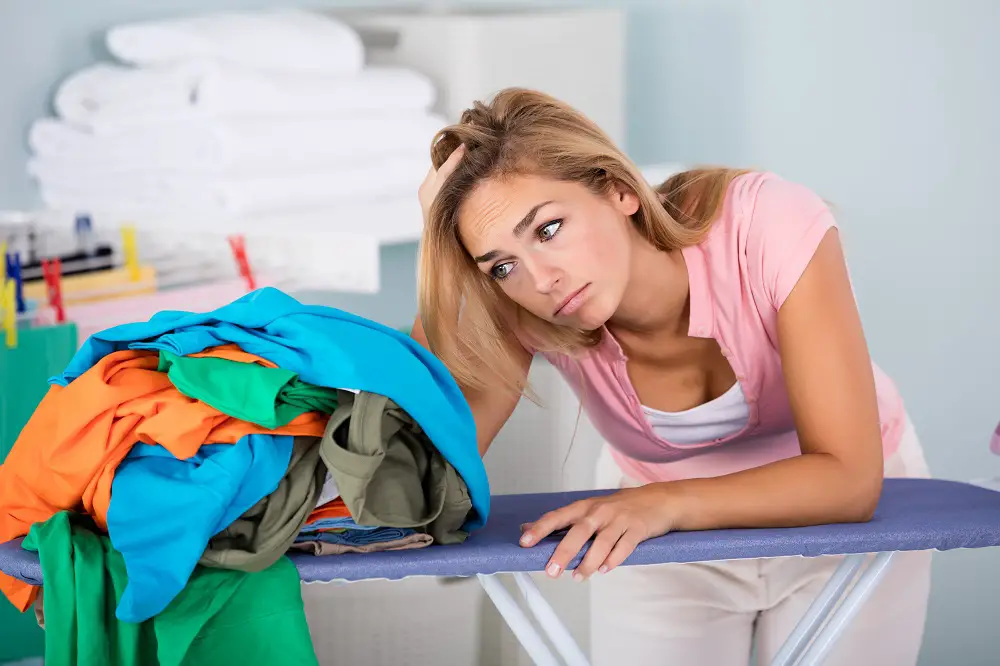A portable clothes washer is a compact version of a full-sized washer in terms of size, capacity, and design. However, portable washing machines work by using centrifugal force as the standard washing machine for strong rotation.
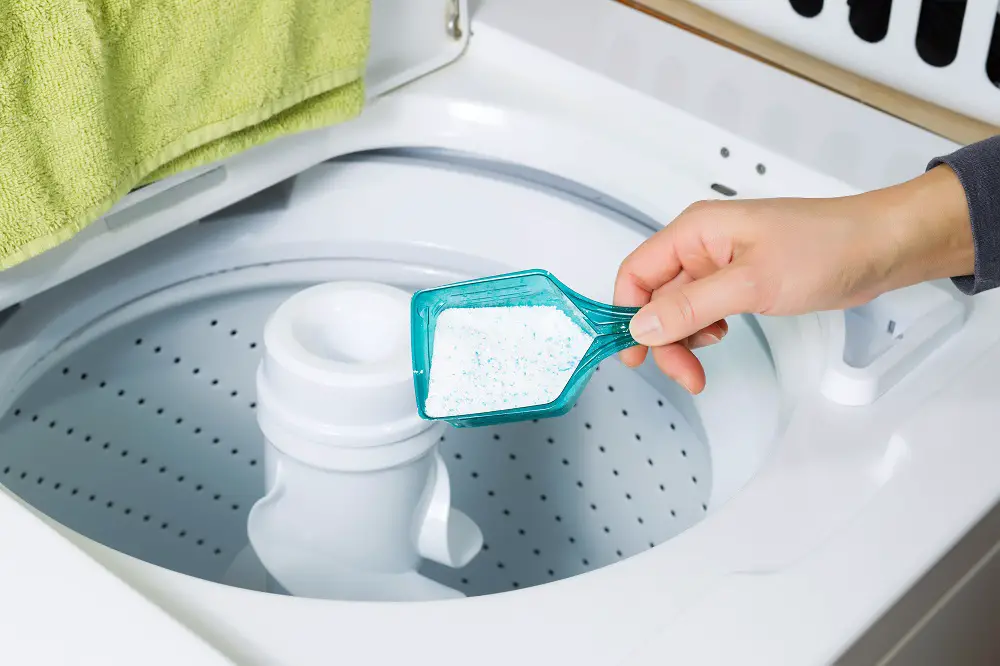
A portable washer uses an inlet hose connection to a sink tap or buckets of water for the wash and rinse cycle and a drain hose to empty the water.
Table of Contents
Working Principle
Portable washing machines come in electric and manual models. The cleaning principle does not vary from regular ones, but the process can be vastly different.
The electric models are available as top load or front load, while the manual ones may be hand-powered or pedal-powered.
Manual Portable Washing Machines
The manual washers lack electronic controls since they don’t require electricity to work. Water needs to be manually filled in such a portable washer.
These human-powered machines have a foot pedal or hand crank as the agitator, a tub to put laundry, water, and soap, and a drain pipe to dispose of the dirty water.
Electric Portable Washing Machines
Electric portable washers work like regular washing machines and use the same principles to apply water and detergents for efficient cleaning. Portable washers are different in the installation and generally need to be reconnected each time of use.
An electric portable washing machine is usually not used with a permanent water line connection since it’s often stored in a corner or closet when not in use.
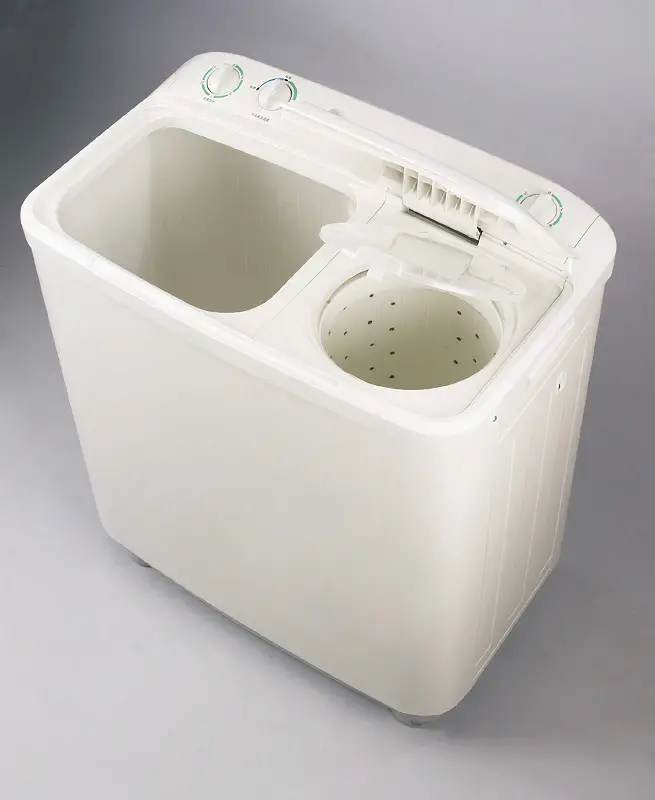
Not all portable washers are the same regarding how water is loaded into them. Some may require manual water filling (and even draining), while most portable washing machines use a water hose and a drain hose for water intake and drain.
Fully automatic washers will take care of the entire process, from the wash cycle to the spin cycle, with no intervention required. However, other portable washers will need you to manually change the mode from regular wash to drain and repeat it for the rinse cycle.
If the washer has a twin tub design, you’ll need to transfer the clothes to the spinner after completing the rinse cycle.
Hook Up Of Portable Washers
A portable washing machine is the choice of those who are tight on space, travel, or change their location frequently. Typically, a portable washer isn’t used in a dedicated laundry room and requires temporary hook-ups rather than permanent ones.
Instead of connecting your portable machine to a dedicated water inlet and drain, it can be hooked to a showerhead, faucet, or hose for water supply and set up to drain the dirty water into a bathroom sink, bathtub, floor drain, or even a kitchen sink.
Portable washers either come with hoses for water hook-ups or may not require a connection, so you’ll have to fill (and even drain) water manually.
Using a flexible pipe or water hose connector, connect one end to the washer and the other end to the source of water.
You’ll need to remove the aerator on your faucet before hooking up the hose.
Similarly, connect the drain hose securely to the machine and place the other end where you’ll be draining the water.
9 Tips on How To Use Portable Washers
If you’d like to make your portable washing machine worth the investment, here are some handy tips on using one effectively.
1. Efficient and Safe Installation (and Use)
For your portable washer’s setup, follow the instruction manual, especially for connecting the hoses to the machine’s body.
Consider purchasing additional adapters if the nozzle included with your appliance isn’t compatible with your sink tap. It helps get a good fit to minimize water leaks.
Also, avoid overloading the machine; portable units have a small load capacity and must be washed with moderate loads (or three-quarters of the machine’s capacity) per the manufacturer’s instructions.
2. Hose Length
Portable machines don’t come with long hoses usually. You can increase the hose length by attaching braided tubing and securing it with a hose clamp. Ensure these are securely attached to avoid any messes.
3. Connect With a Cold Side
Connect the water supply hose to a cold water supply (use faucet control to adjust the water temperature). However, you may use hot water for towels, sheets, and undergarments.
Avoid turning the tap off during wash cycles and use water temperature suitable for different fabrics.
4. Close Placement to Sink
If you’re not keen on buying any extensions for your portable washer, you may want to place the machine close to both a sink and an electric point. You can use the sink to attach the water inlet hose and the drain pipe, although the sink becomes inaccessible while running your washer.
If your bathroom sink isn’t deep enough to handle the water quantity draining from the machine, consider draining into a utility sink instead.
Ideally, the drain hose must be at a lower height from the surface to utilize gravity for draining water efficiently.
5. Detergent Use
A small amount of liquid detergent works best. Many portable washing machines don’t have detergent dispensers, and you’ll need to add the detergent directly into the washing drum.
It’s best to add detergent while the water is running to avoid it clumping in one area.
6. Fabric Softener Use
To get your clothes to dry faster and make them feel soft, not starchy, try using extra fabric softener or natural softeners like vinegar (consult the instruction manual first).
7. Disconnect the Hose at the End of the Cycle
Once you’re done with your laundry, turn the water supply off and wait a few seconds to disconnect the quick-release valve to allow any built-up water pressure to settle.
After disconnecting the water hose, let it drip dry in the sink for a few minutes before storing it away.
8. Regular Maintenance
Just like a full-sized unit, you must maintain a portable washing machine.
Run the washer empty with any appliance cleaner or bleach once every six months.
This helps remove any buildup of soap, lint, dirt, and bacteria. Also, inspect and clean the hoses and lint filters regularly.
9. Drying Your Laundry
Most portable washers have a spin cycle to squeeze out water; some cheaper models or manual ones don’t (leaving you with soaking wet clothes).
You can opt to use either a drying rack or a portable dryer (there are good stackable options) to complete drying your laundry.
When Should You Buy A Portable Washer?
A portable washing machine is an ideal choice for the following scenarios:
- Your place has no space (or hook-ups) necessary to install a full-size washer or dryer.
- You’re not keen on going to a laundromat to get your laundry done, or there isn’t one nearby.
- You want to use a washer in a dorm room or RV.
- You’re a frequent traveler who wants to take your own washer along.
- Doing laundry only for a single person (although portable washers are suitable for laundry of 3-4 members).
- If you have a small budget and can’t afford any of the full-sized washers, you can pick one from the many portable washers to suit your needs.
- If your landlord doesn’t permit you to have an electric machine, you could go for a manual portable washer.
Final Thoughts
Now that you know how portable washing machines work, if you don’t have one yet, consider purchasing one like the Magic Chef Washer (the best compact mini machine), Lavario portable clothes washer (ideal for traveling), or Costway Mini washing machine (best portable washing machine for a single person).
Remember, these compact machines aren’t meant to work like regular full-sized ones; it’s meant to fill the gaps where a standard machine might not be suitable. It makes for a convenient, flexible, and energy-efficient option and helps save money.
